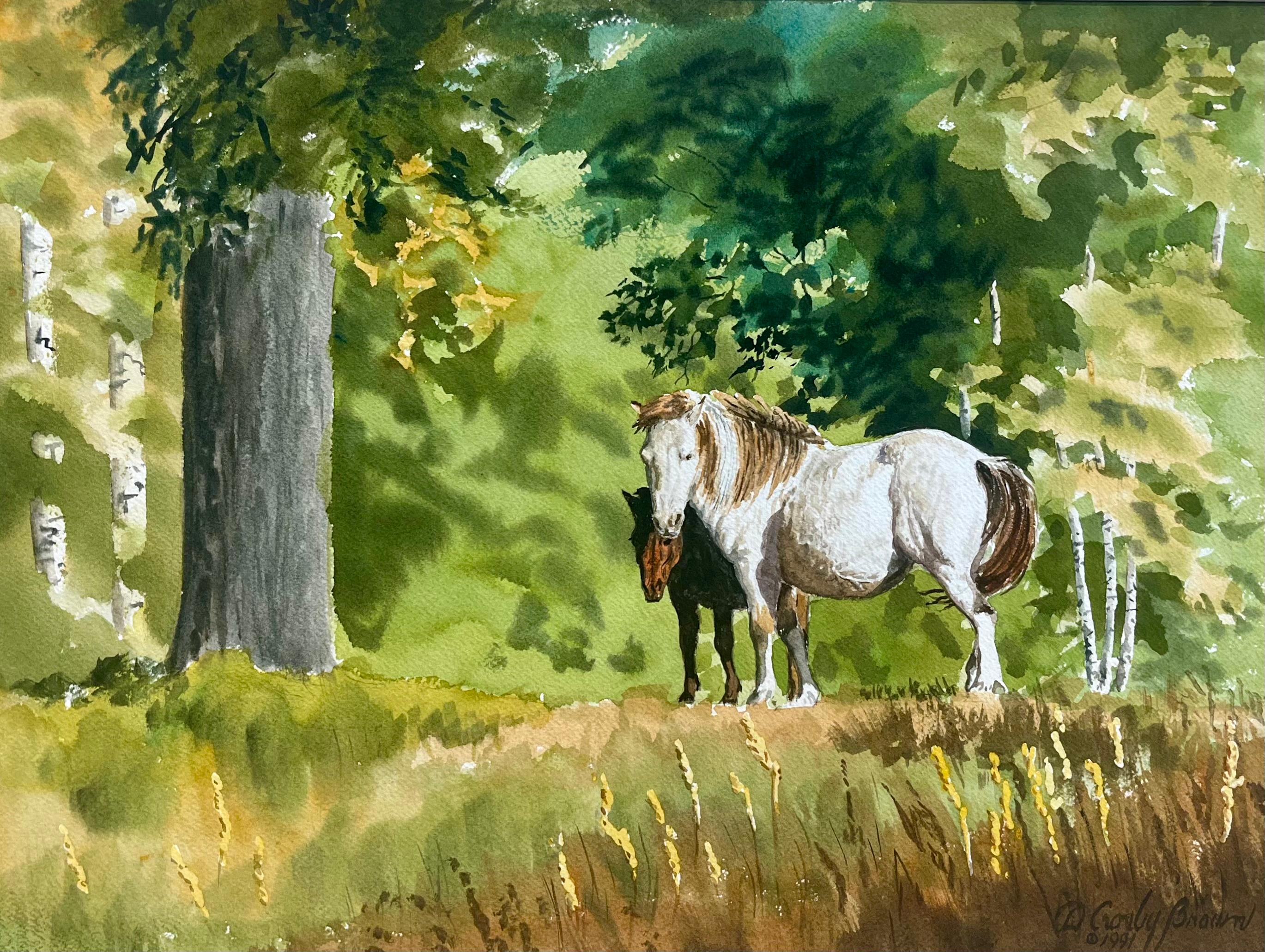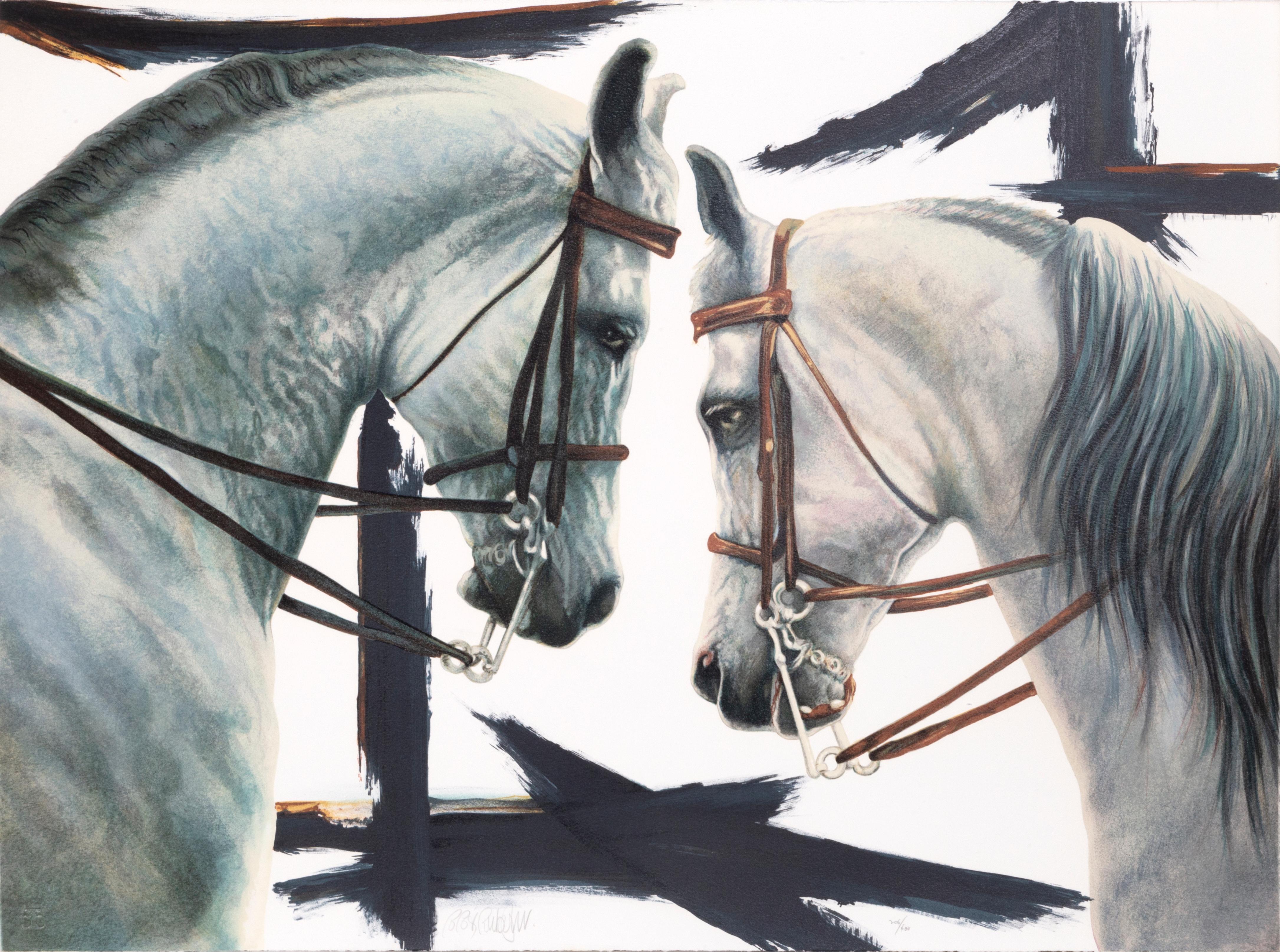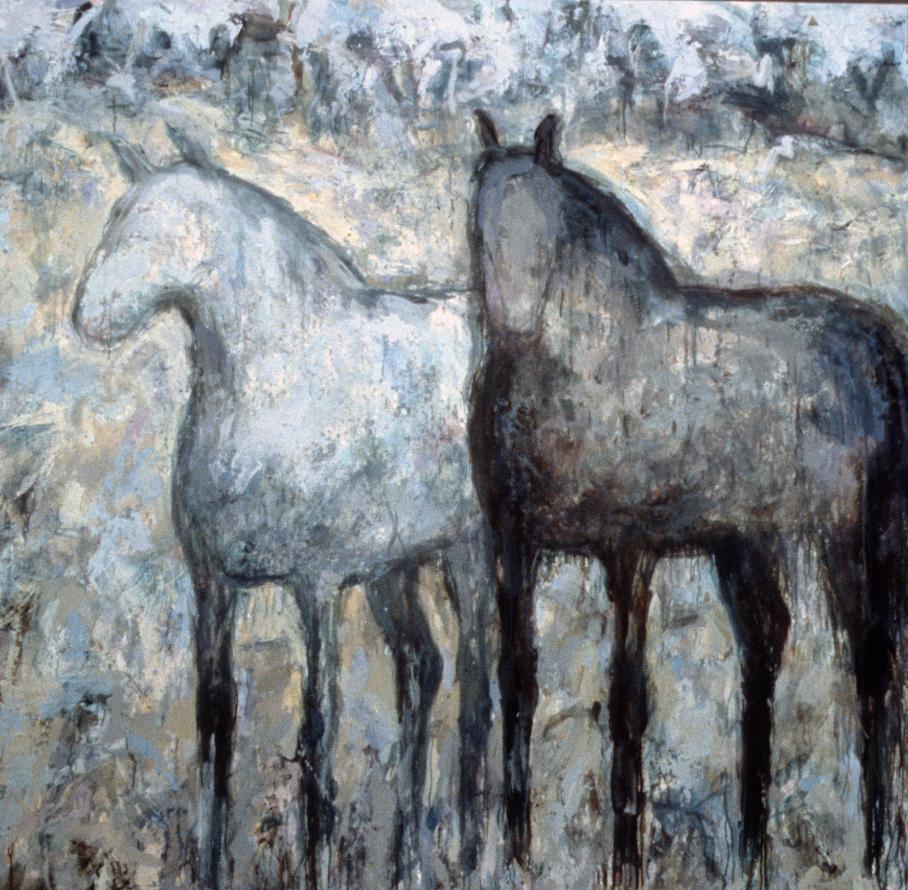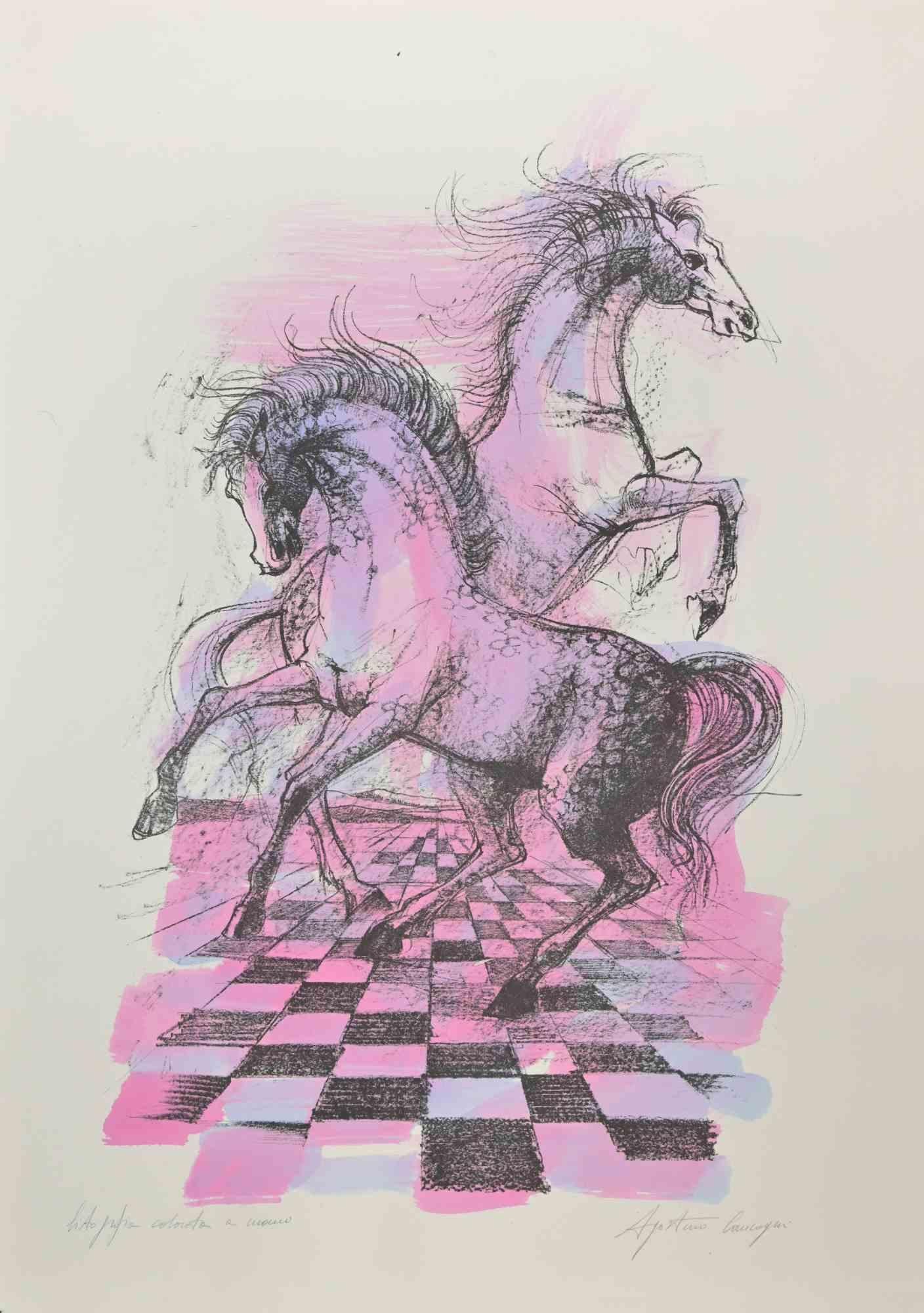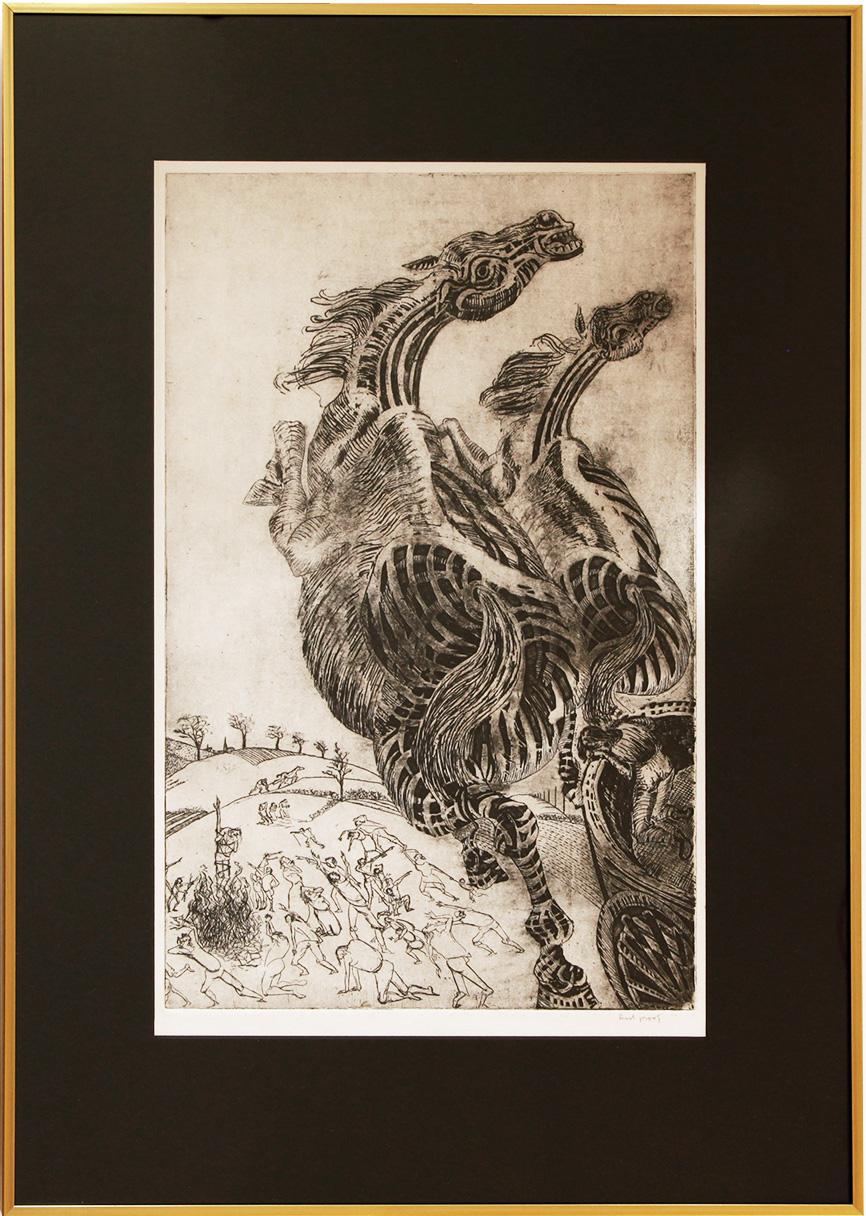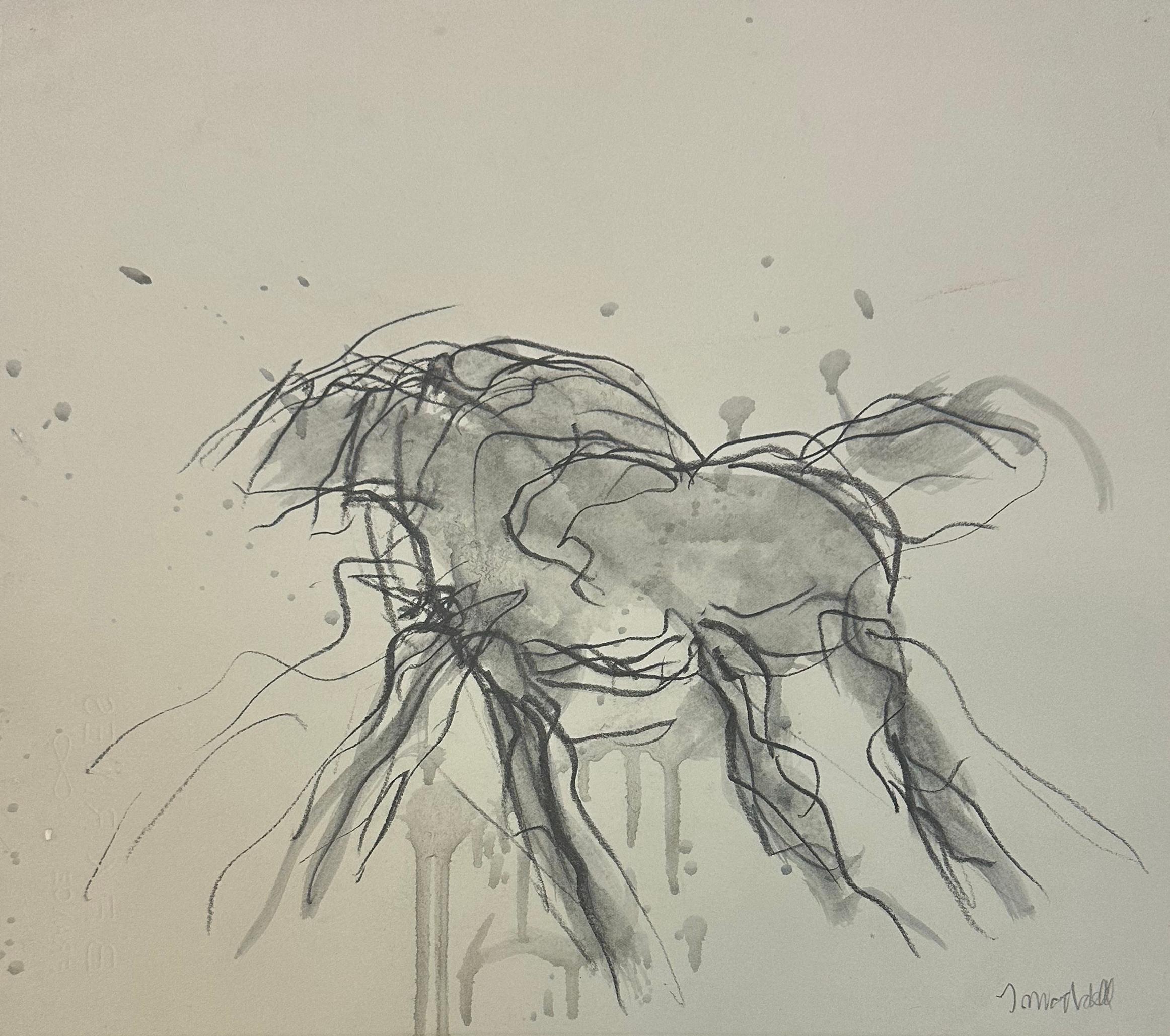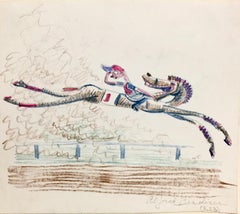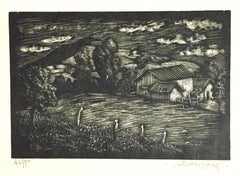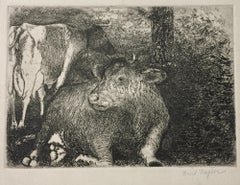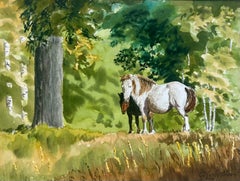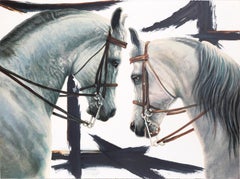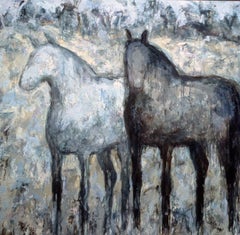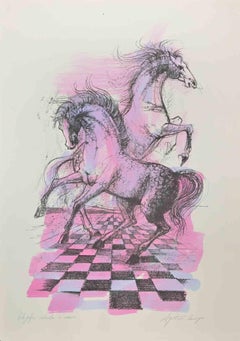Items Similar to Reginald Wilson, Horses
Want more images or videos?
Request additional images or videos from the seller
1 of 5
Reginald WilsonReginald Wilson, Horses1938
1938
$500
£389.60
€441.99
CA$718.61
A$791.26
CHF 410.30
MX$9,370.71
NOK 5,208.54
SEK 4,867.97
DKK 3,301.11
About the Item
Although this work is titled Horses. It nice to think it could be (Horses in a Field in Woodstock, NY), but it was printed by Will Barnet at the Art Students League, about 1938, and Wilson, who visited Woodstock with Arnold Blanche in 1939, didn't move to there until after he returned to the States after serving in World War II in the Army/Air Force. He was married to the artist Carolyn Haeberlin. In the 1930s Wilson also worked on the NYC-WPA.
This lithograph is signed in pencil.
- Creator:Reginald Wilson (1909 - 1993, American)
- Creation Year:1938
- Dimensions:Height: 7.5 in (19.05 cm)Width: 13.25 in (33.66 cm)
- Medium:
- Movement & Style:
- Period:
- Condition:Large sheet, one-inch tear into lower margin, some staining and creasing in margins, outside image.
- Gallery Location:New York, NY
- Reference Number:1stDibs: LU141028193402
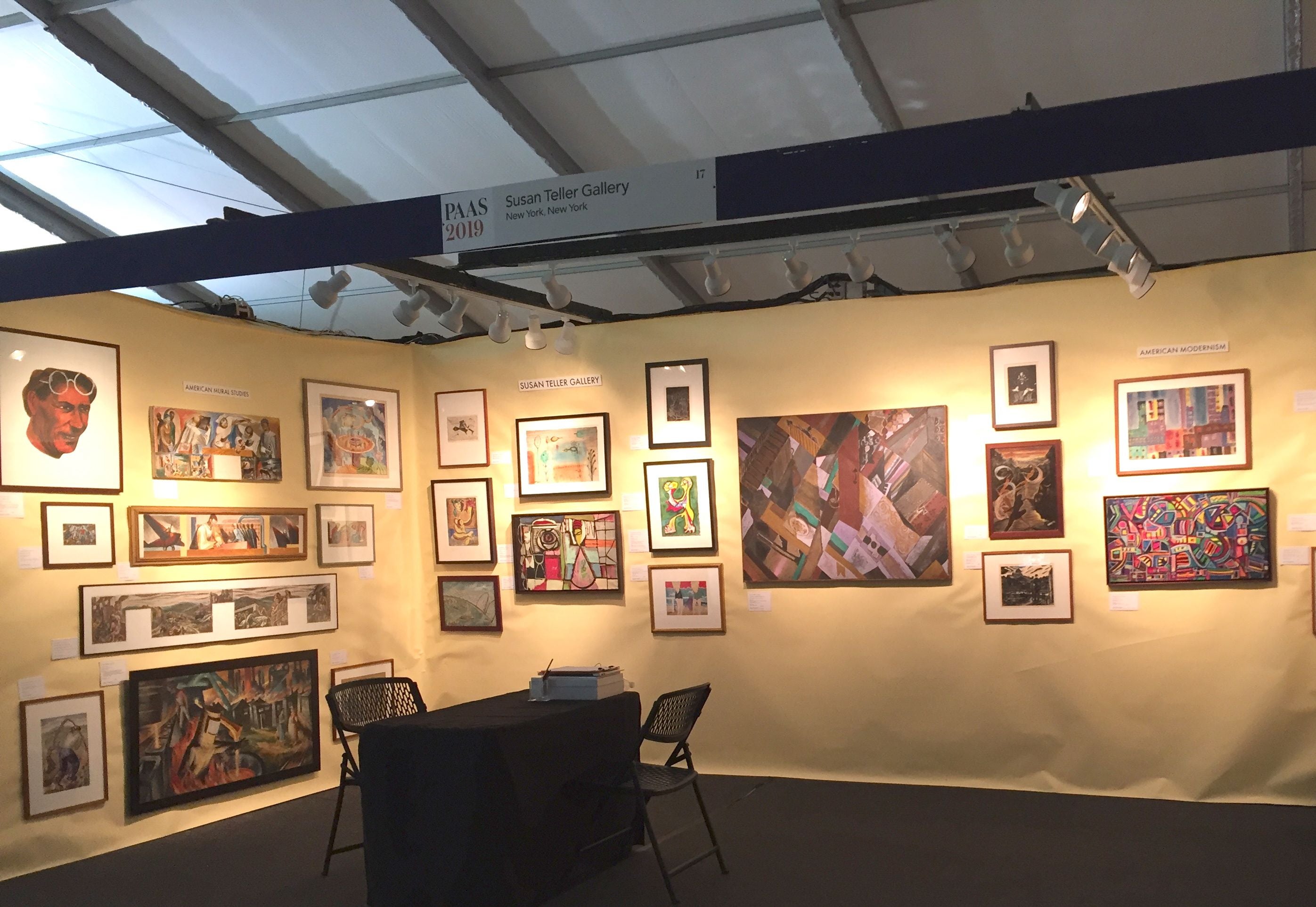
About the Seller
4.9
Gold Seller
Premium sellers maintaining a 4.3+ rating and 24-hour response times
Established in 1988
1stDibs seller since 2020
128 sales on 1stDibs
Typical response time: 5 hours
- ShippingRetrieving quote...Shipping from: New York, NY
- Return Policy
More From This Seller
View AllHorse Laugh
By Alfred Bendiner
Located in New York, NY
Alfred Bendiner (1899-1964) was trained as an architect but worked as an artist throughout his career. He was a noted lithographer, as well an author, muralist, and caricaturist. The...
Category
Mid-20th Century American Modern Animal Prints
Materials
Crayon
Hendrik Glintenkamp, (Farmyard)
By Hendrik Glintenkamp
Located in New York, NY
More a wood engraving rather than a woodcut, Glintenkamp's Farmyard scene was given all the care and detail of the artist's more complex images. It is signed and numbered in pencil. ...
Category
1920s American Modern Landscape Prints
Materials
Woodcut
Fred Nagler, (Cows in a Pasture)
By Fred Nagler
Located in New York, NY
Massachusetts-born Fred Nagler studied at the Art Students League from 1914 to 1917, with George Bridgeman and Robert Henri, and eventually became a member of the Board of Control. He taught at the Connecticut College for Women, and after the death of Grant Wood, the University of Iowa State...
Category
1920s Ashcan School Animal Prints
Materials
Etching
Fiske Boyd, The Hay-Meadow
Located in New York, NY
Boyd was a master printmaker. This wood engraving is a marvel of open space.
There may have been a horizontal crack in the block. There's a disconnect running across the center. At...
Category
Mid-20th Century American Modern Landscape Prints
Materials
Woodcut
Frank Kleinholz, World Premier
By Frank Kleinholz
Located in New York, NY
Frank Kleinholz was a lawyer-turned-modernist-artist. This work may have been printed in France in the late 1940s when he went there to learn lithography. He returned to the states i...
Category
Mid-20th Century American Modern Figurative Prints
Materials
Lithograph
Bernard Sanders, (Lovers)
Located in New York, NY
Clearly Sanders (1906-1967) was a master at these minimalist figurative prints. It's all about atmosphere and tension.
Perhaps reflecting the print here, (Lovers), he, in fact, w...
Category
Early 20th Century American Modern Interior Prints
Materials
Drypoint, Etching
You May Also Like
Horses Grazing
Located in Fredericksburg, VA
In "Horses Grazing," Donald Crosby Brown transports viewers to a peaceful, sunlit meadow where two well-fed horses graze contentedly. The scene is rich with greens and yellows, sugge...
Category
Late 20th Century Contemporary Animal Drawings and Watercolors
Materials
Paper, Watercolor
Horses, Contemporary Equestrian Lithograph by Popo and Ruby Lee
By Popo and Ruby Lee
Located in Long Island City, NY
Artist: Popo and Ruby Lee
Title: Horses
Year: circa 1980
Medium: Lithograph, signed and numbered in pencil
Edition: 206/400
Size: 24 x 32 in. (60.96 x 81.28 cm)
Category
1980s Contemporary Animal Prints
Materials
Lithograph
Arrow Creek Horses
By Theodore Waddell
Located in Bozeman, MT
Waddell's paintings are a combination of rough marks, thick paint, transparent elegant strokes, and, on a few occasions a slow, hard line scratched into the canvas. You can feel the ...
Category
1990s Contemporary Landscape Paintings
Materials
Canvas, Encaustic, Oil
Free Horses - Lithograph by Agostino Cancogni - 1980s
Located in Roma, IT
Free Horses is a beautiful lithograph realized by Agostino Cancogni in the 1980s.
Hand-watercolored lithograph on paper. Unique specimen.
Personally colored by the artist and hand...
Category
1980s Contemporary Animal Prints
Materials
Lithograph
$211 Sale Price
40% Off
Death of Faithful - Horses from Pilgrim’s Progress
Located in London, GB
Striking first proof of Péri’s “Death of Faithful”, from his Pilgrim’s Progress etchings. Inscribed “first proof”.
Artist: Peter László Péri
Date: 1...
Category
1950s Modern Animal Prints
Materials
Paper, Etching
Texas Horses Dr. #19
By Theodore Waddell
Located in Bozeman, MT
Waddell's paintings are a combination of rough marks, thick paint, transparent elegant strokes, and, on a few occasions a slow, hard line scratched into the canvas. You can feel the ...
Category
1990s Contemporary Landscape Paintings
Materials
Mixed Media, Paper, Charcoal, Ink
More Ways To Browse
Wpa Sign
Lloyd Kiva
Lobster Telephone
Norbertine Bresslern Roth
Owl Woodblock Print
Picasso Bird Lithograph
Picasso Bull Plate
Picasso Chien
Picasso Dove Lithograph
Picasso Lithograph Gold
Picasso Lithograph Owl
Picasso Print Dove
Poster Aesthetic Vintage Art
Prairie Dog
Signed Duck Art Prints
Simon Bussy
Strato Lounger
Tete De Taureau
